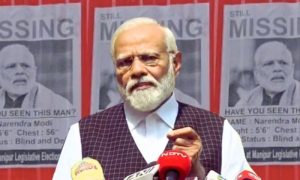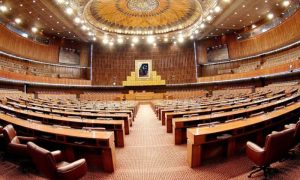While Muslims in India are increasingly facing oppression and suppression under the Hindutva mindset, the BJP government has now unleashed its media to target Muslim countries. The recent release of the film “The Goat Life” by Bollywood is a troubling manifestation of it. The nearly three-hour-long film portrays the Kingdom of Saudi Arabia in an intensely negative light, echoing the growing Islamophobia within India and reflecting the government’s broader media strategy. This film exemplifies how propaganda can distort realities and fuel existing prejudices.
The Goat Life begins with the story of Najeeb Muhammad, a young man from Kerala who dreams of securing a better future abroad for his unborn child. It shows that Najeeb and his younger brother endure significant hardship to obtain a visa for a Gulf country. They eventually secure jobs with a Saudi company, but the film shows that their optimism quickly turns to despair upon arrival as Najeeb’s sponsor, or ‘kafeel’, forces him to live alone in the desert with only goats for company. The film depicts this extreme isolation as stripping Najeeb of his emotions, memory, and cognitive abilities, portraying him as gradually losing his sense of self and humanity. After three years, he manages to escape, marking the film’s dramatic conclusion.
The film’s depiction of Saudi Arabia’s labour system is alarmingly harsh. It paints a picture of an oppressive and cruel environment where migrant workers are subjected to inhumane conditions. This portrayal is not just a matter of artistic license; it is deeply rooted in a narrative designed to vilify Saudi Arabia and undermine its global image. The question that arises is: If the Saudi labour system is indeed as cruel as the film suggests, why do millions of people from the subcontinent, including a significant number of Indians, choose to work there?
According to the Indian government’s own figures, there are nearly 2.5 million Indian workers in Saudi Arabia, making them the largest community of foreign workers in the Kingdom. These Indian expatriates send home around 11 billion US dollars in remittances annually, highlighting the economic significance of these workers. Their continued presence in Saudi Arabia suggests that the film’s depiction might be more about propagating a particular ideological narrative than reflecting reality.
Moreover, the timing of The Goat Life is particularly problematic given the current political and economic landscape in Saudi Arabia. The Kingdom, under its Vision 2030 initiative, is actively working to diversify its economy away from oil dependence. This vision includes substantial investments in entertainment and sports, with Saudi Arabia hosting numerous international events in recent years. These developments signal a broader effort to open up to the world and modernize its economy. By portraying Saudi Arabia in such a negative light, The Goat Life seems intent on undermining these progressive changes and tarnishing the Kingdom’s global image.
The reaction from the Gulf States to The Goat Life has been both swift and severe. Countries such as the UAE, Kuwait, and Qatar have expressed their strong concerns over the film. The depiction of Saudi Arabia in such a negative light has led to calls for a boycott, with social media in the Gulf region abuzz with hashtags like #BanGoatLife and #BoycottIndianCinema. In Saudi Arabia, the film has been met with significant criticism. Many in the Kingdom view it as a deliberate attempt to misrepresent the country and its labor practices. The film’s narrative is seen as part of a broader trend of anti-Muslim sentiment that has been increasingly prevalent in Indian media.
Also, instead of focusing on external targets, the Indian media should redirect its attention inward. The situation for Muslims and other minorities in India is dire. Numerous reports highlight religious intolerance, violence, and suppression of religious practices. Indian cinema, rather than perpetuating stereotypes about other nations, should address these pressing internal issues. Yet, given the influence of the Hindutva mindset, which dominates Indian media, it is unlikely that films addressing these domestic problems will be produced.



























